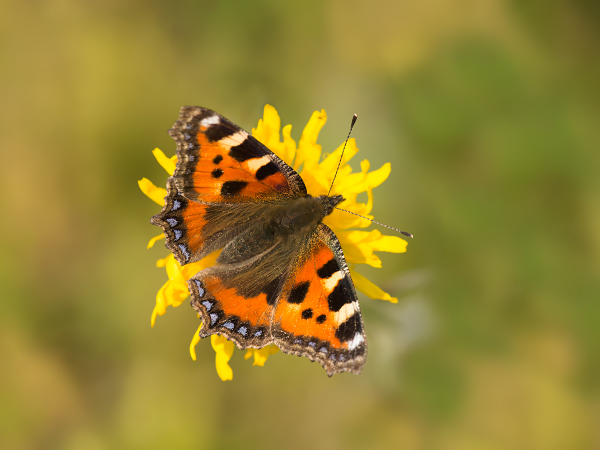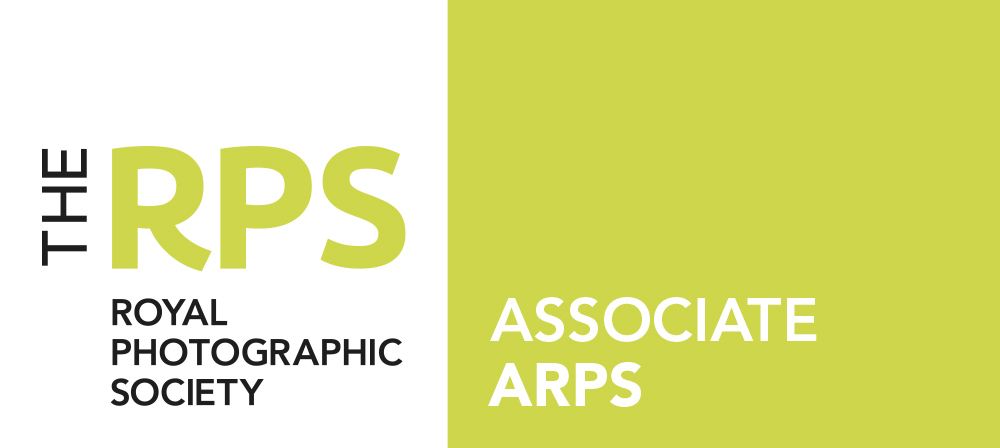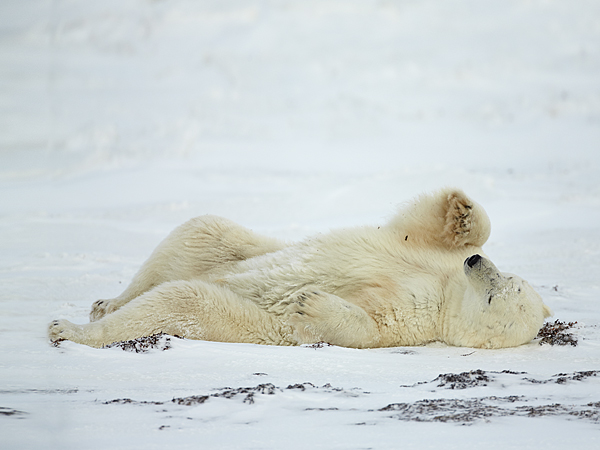|
Nigel's Wildlife Photography Blog : 2015 |
|||||||||||||||
| Saturday 19th December | |||||||||||||||
| Seasons Greetings To One And All | |||||||||||||||
 |
|||||||||||||||
|
|
|||||||||||||||
| Another Year Draws To A Close | |||||||||||||||
|
In recent years, I have finished each year with a few thoughts on the current year as well as some thoughts on the year ahead and this year is no exception.
From a photography point of view, its been a bit quieter than a few of my previous years, but, as always, I still ended up taking many thousands of images, many of which never made it past the upload onto my iMac. One thing that I have recently been doing is saving all my processed images into two folders, one for use online including on here my website, and another folder of larger images for projection, sharing with friends, and general viewing. These folders show that I have processed between 250 and 300 images this year.
There has been quiet periods which included the macro season which coincided with quite a bit of wet and windy weather. This has definitely resulted in less images of flowers, butterflies, and fungi than I had hoped for, and I will be adding a few targeted visits for some macro photography to my targets for 2016.
During September and October I took a break from taking images so I could watch the Rugby World Cup which was held in England. It would be an understatement to say that the England team was disappointing, but wow, what a great tournament. Sue and I ended up watching 8 games live at 4 separate venues and were very prevaliged to be able to watch a RWC final. As everyone knows the final was a excellent game, that resulted in a win for New Zealand in a game with lots of action which was one of the highest scoring finals of many years.
From a photography point of view, I have taken quite a diverse collection of images this year ranging from time spent focusing on local owls through to another week in snowy Finland. One species that I had wanted to see and photograph for many years was the Corncrake and I managed that during a very enjoyable and productive week in Uist which was followed by a week in Dumfries where Badger and Cuckoo were the highlights.
|
|||||||||||||||
|
|||||||||||||||
|
Away from the lens, it has been a busy year in other photographic areas with the number of talks I have done for camera clubs and wildlife groups continuing to rise. It continues to look good with several repeat bookings, indeed, I have already got more bookings for 2016 than I did in 2015. This is a pleasing development in an area that I wish to expand. I am also pleased to report that I also have a few bookings already for 2017.
2015 saw a few magazine articles printed during the year including two in the journal of the Royal Photographic Society, which is also good news as this is another area that I want to increase over the coming years. A few months ago, I was approached regarding the use of one of my award winning images, the contact enquired about its possible use on the front cover of a book. Well the book is currently being finished and will go to print very soon with my image on its cover. As it happens, it looks to be a great wildlife book (not just a great cover) and I will put details on here as the publication date gets closer.
Back in August, Sue and I had a great week cruising round the west coast of Scotland visiting a few new islands. This was followed by another great week in Grantown on Spey which the accommodation was provided to us as part of a competition win at the start of 2015. But I have not entered many photographic competitions this year, in mid November I entered Smethwick photographic Exhibition and was pleased when my image of two Black Grouse Lekking in Finland was awarded a Gold medal which was my third gold at Smethwick. This has certainly given me a boost, as I have entered a few more competitions in the past few weeks, but at the time of writing this blog update, no results have been received, fingers crossed.
Also on the subject of competitions, the rules for wildlife photography entries have been made a lot tighter with regard to what is allowable regarding editing and it is now no longer permissible to do anything other than basic editing involing things such as levels, curves, an basic tweaking. I am obviously happy to only enter images that meet the criteria of any wildlife competitions I enter. But in the meantime I have also been having quite a bit of fun creating “manipulated images in Photoshop” over the past few months.
Many of these images have not been shown either on my website or on facebook, indeed the Barn Owl image below was one of the images that I have created over the past few weeks, and has not been seen online before adding to tjhis review (the original was taken earlier this year near the Cambridgeshire / Norfolk border early one morning as the sun was rising). |
|||||||||||||||
 |
|||||||||||||||
|
|
|||||||||||||||
| 2016 | |||||||||||||||
|
It will not come as a surprise that there are already some quite advanced plans for 2016, and even less of a surprise that many of these include my camera. Flights are booked for another week in Finland during which we are again hoping for snowy conditions. Finland has been a favourite destination for many years and once again I am looking forward to seeing what wildlife we can find during our 2016 visit. Scotland also features again in 2016 with an early in the year visit to Alan McFayden’s excellent wildlife photography set up. Another visit during the summer to again cruise around the islands and hopefully climb a few more of the outstanding Munro’s has also been booked.
A few other thoughts and ideas are taking shape, but these will be added onto my blog when plans firm up more, but its fair to say that I am really looking forward to 2016 and hopefully some fresh opportunities which will hopefully provide the images for me to use and report on both my website and on Facebook page.
As mentioned earlier in this blog post, I am keen to persue more macro work in 2016 than I managed in 2015 and I will be targeting both new species along with revisiting species I have previously photographed. Amongst one of the target species will be the Emperor moth which I saw back in April but did not manage to get any images that I am happy with. For various reasons, I did not use my moth trap in 2015, and that is something I want to put right in 2016 and get some local Leicestershire moths including many of the Tiger moths and Hawk moth's that visit.
It goes without saying that birds such as Owls will be on my 2016 target list, but to be fair I am sure they are also on 99.9% of wildlife photographers target lists. I would love to get a few more woodpecker images during the year and I am hoping that my visit to Finland will add more images of both Black woodpeckers and Grey Headed woodpeckers. Over the past year there has been the occasional Green woodpecker visiting my back garden and although the travel distance could not be less if I tried, it is still a species where good images are very hard to come by, time will tell if 2016 will produce them.
One bird that is becoming more common is the Red Kite which I regularly see in my travels. But as of yet, I still have not seen one whilst looking out over the garden and fields beyond. I am patiently waiting for the day that i see Red Kites from my bedroom window (even if they are not close enough to photograph) and it would be good if I saw one in 2016. I feel its only a matter of time before this great species is seen in my own patch.
|
|||||||||||||||
 |
|||||||||||||||
| These two images of Short Eared Owls were both taken during 2015, the top image is from Scotland and the bottom image was taken a couple of weeks ago near my home in the East Midlands. | |||||||||||||||
 |
|||||||||||||||
|
Pearl Bordered Frit and High brown Frit are two butterfly species that are in need of improvement, but I am yet to look at my diary to see if a visit can be made to target these in 2016 or if they will need to wait until 2017.
Yes, it will soon be time to look at my 2017 plans as I already have a few trips planned in my diary already. But I guess it may be another year before they feature on this page. But I have no doubt that the next 12 months will fly by and as always it will be interesting to see what i write in a review in 12 months time.
|
|||||||||||||||
|
|
|||||||||||||||
| 1st December | |||||||||||||||
| Journal Article For The Royal Photographic Society | |||||||||||||||
|
A few months ago, The Royal Photographic Society asked me to write and article on Winter Wildlife photography as part of their master class section. My article which is accompanied by some of my winter images and is published today in their journal. This is in RPS Volume 155/12. |
|||||||||||||||
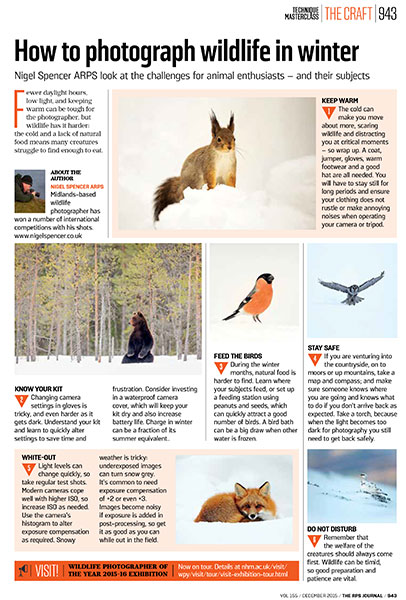 |
|||||||||||||||
| The journal is now online (for RPS members) on their website at: The Royal Photographic Society, with the paper version being posted out this week. | |||||||||||||||
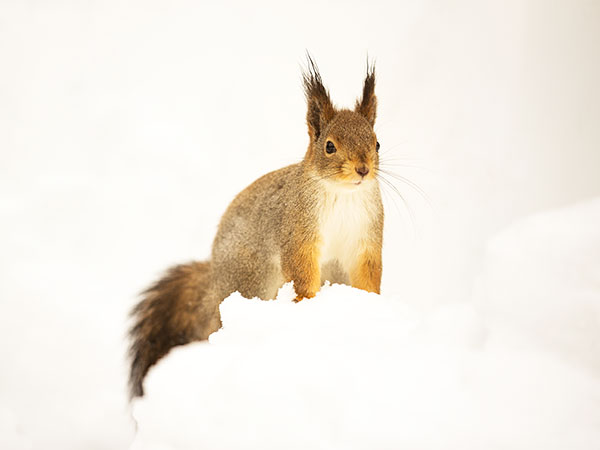 |
|||||||||||||||
|
In general, I like the long early summer days of May & June when it stays light for long hours and its warm enough to wear shorts all day. But from a photography point of view, I love winter and producing wildlife images in the snow. Winter is definitely one of my favourite times of the year to be out with my camera and it was good that the RPS chose this as the subject for this magazine article. 2015, is slowly drawing to an end, we have now reached December the snow has been around in Finland for several weeks. Over the past few days the snow has begun to fall in Scotland, I am already looking forward to the winter photography season ahead. |
|||||||||||||||
 |
|||||||||||||||
|
|
|||||||||||||||
| 24th November | |||||||||||||||
| My 2016 Calendars Have Arrived From The Printers | |||||||||||||||
|
For a number of years, I have produced a wall hanging calendar featuring a selection of my images, for 2016, I have chosen "British Wildlife" as the theme for my calendars. Below is a screen shot of the 2016 cover and of the July page where I have chosen a Badger image. This image was taken in Southern Scotland a few months ago and has been my most popular image on facebook this year with over 750 likes. |
|||||||||||||||
|
|||||||||||||||
| These calendars will be available at my illustrated photography talks, and online via this website. Please contact me if you are interested in purchasing one. | |||||||||||||||
|
|
|||||||||||||||
| 22nd November | |||||||||||||||
| I Am Very Pleased To Announce Smethwick Gold For The Second Year Running. | |||||||||||||||
|
It has been quite a few months since I last entered any national or international photography competition, but after really pleasing success in last years Smethwick International competition, I felt that I ought to have another go this year and enter what is probably the premier UK club photography competition. Therefore a few weeks ago, I entered 4 digital images into the nature section along with another 4 digital images into the open section. This morning, I received an email containing my results and I was very pleased that I did enter. My results email contained the scores that the judges awarded for each of the eight images along with the comment that I had been awarded a gold medal to add to last years success in the nature section along with a ribbon for one of my digital creations. |
|||||||||||||||
 |
|||||||||||||||
| The image above of two male Black Grouse lekking in fresh snow which was taken earlier this year in Northern Finland was awarded a score of 15 out of 15 and chosen by the judges as the winner of a gold medal in the nature section. | |||||||||||||||
|
The nature rules of most competitions don't allow much editing of images other than the odd tweak here and there such as curves, levels, etc. The Arctic Fox image below was taken a few years ago in Churchill in Canada and I have edited the image in photoshop to create the dramatic effect using a wee bit of artistic licence. I am pleased to announce that this was one of two images of artistic art that I got accepted in this years Smethwick exhibition, and furthermore it was awarded a score of 15 out of 15 and awarded a Royal Photographic Society ribbon. |
|||||||||||||||
 |
|||||||||||||||
| As regular readers will know, I try and update this blog at least once per month. But please revisit the blog soon if you can because over the next couple of weeks, i have a few announcements. Firstly, I will be announcing my 2016 calendars in a couple of days time when I recieve them from the printers. Secondly, I will be announcing a new magazine article on my photography in a couple of days time when it gets published. | |||||||||||||||
|
|
|||||||||||||||
| 22nd October | |||||||||||||||
| Enjoying The Rugby While Presenting One Of Each | |||||||||||||||
|
From a photography point of view, I have been very quiet recently and have not ventured out with my camera for a few weeks, I had planned to try and get a few images of the annual Red Deer rut, but have not yet managed it. But there is still a chance that I will pay a visit to my local "rutting Green" in early November if the conditions look favourable. I have however been busy doing something different away from photography. For the past 6 weeks, I have been busy enjoying the Rugby World Cup, and have ended up watching several games on TV as well as being lucky enough to visit four different venues to see a total of 12 teams play 7 games (I have seen Argentenia and Canada twice). All of which were really entertaining games especially some of the games which afeatured the less well known as rugby nations most of whom have played really well. Sue and I have seen some high scoring games along with many great trys. It's not been totally quiet in the wildlife photography area during October as I have also been busy giving talks and presentations to various camera clubs and wildlife groups. These have been quite varried, local in Leicester, and as far afield as far as Droitwich, but as always, its been good to get a very warm welcome and meet new people who are also interested in both wildlife and photography. An interesting coincidence this month, I have been asked to give all of my five talks during the calendar month. Often I give more talks on a particular subject such as Winter, Macro, or the Falkland Islands. Allthough I have a couple of new talks under preperation, I currently have five talks listed on this website, and as luck has it, I took booking for five talks during October and each group wanted a different talk. |
|||||||||||||||
|
|||||||||||||||
| Bookings arive for a few weeks in advance as well as many months into the future and i always try and accomadate any requests where I am free on the requested dates. But I have this month taken my first lecture booking for 2017 which currently feels quite a way off, but its good to see some people are more organised than me. | |||||||||||||||
| Back to this weekend, this Saturday and Sunday sees the RWC semi-finals and looks to be at be two more great games. Then with the final to look forward to, I guess it will be another couple of weeks before i mange to get out with my camera again. But as my team were knocked out several weeks ago, I am now completely neutral as to the results, but I am looking forward to more good games. | |||||||||||||||
| Back to the photography, If you would like a talk to your photographic society or wildlife group, then please get in touch via the contact Nigel page, as I always enjoy meeting both old friends and new faces. | |||||||||||||||
|
|
|||||||||||||||
| 29th September | |||||||||||||||
| The Famous Grouse - Standing In Pink | |||||||||||||||
|
If asked what my favourite bird species is, there is no doubt that I would struggle to name a single species. Even if I was asked to name my top ten favourite bird species I would still find it very hard. But one species that would definitely make the top ten is Red Grouse. A very peaceful bird to watch with lovely colours and feather patterns. It has a distinctive call which is often very easy to recognise quite a while before you see them sitting in the heather. It's always good to see and photograph Red Grouse, but when they are in pink heather, they are in my opinion ta stunning sight. During my visit to Scotland earlier this month the heather was at its best and we spent several days walking three of Scotlands 300feet mountains that have been given "Munro" status. During these walks we saw plenty of Red Deer, along with the occasional Ptarmigan and reasonable numbers of Mountain Hares. But the bird species that we saw most frequently was the Red Grouse. During these mountain climbing trips, I did not always take along my camera as i wanted to save weight and concentrate on enjoying the walking. But during one of the days when we were not chasing mountain summits, Sue and I spent a day where we did take the camera along and I was pleased to fing some Red Grouse standing in the pink. |
|||||||||||||||
 |
|||||||||||||||
 |
|||||||||||||||
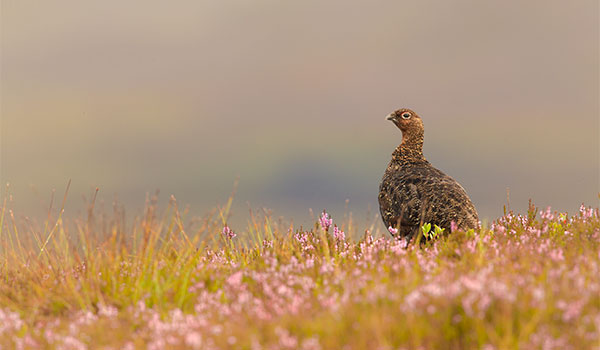 |
|||||||||||||||
|
|
|||||||||||||||
| 14th September | |||||||||||||||
| Scottish Island Hoping | |||||||||||||||
|
Many many years ago I went on a sailing voyage visiting several Scottish islands, as a group of six friends we charted a small sailing boat from Dunstafanage and circumnavigated Mull having a great time. The following year we ventured north, chartered a different boat and circumnavigated Skye. During these two trips we visited a few Puffin colonies, along with some famous islands such as Staffa, Eigg, and Lunga, but this was before the digital age, before the internet, and my images are all on slide film tucked away in the attic. The charter yachts we hired had no static crew and the six of us crewed the vessels mainly under the power of sail. We only covered quite a small geographic sailing area due to the slow leisurely speed of sailing. But ever since, I have always wanted to do a similar thing and revisit some of theses inaccessible areas again by boat. Earlier this year, whilst looking at holiday ideas, Sue and were looking at various options which resulted in us deciding to join a boating holiday starting and finishing from Oban and cruising around the Hebrides. The company we booked with uses quite small boats for multi night commercial trips, but we didn't want a huge yacht carrying many hundreds of people, and we specifically wanted to be on a smaller boat that was capable of visiting a few of the many more remote destinations on offer in the Hebrides. The boat we chosen was a 22.8 meters in length and holds just 12 passengers and three crew, it started its life in the Norwegian oil fields as a working rescue ship. It still uses its original Norwegian name of Hjalmar Bjorge but has now been refurburbished for passenger use as a commercial motor cruiser operating in the Scotish coastal waters and Hebridiean islands. |
|||||||||||||||
 |
|||||||||||||||
 |
|||||||||||||||
|
There is no fixed itinerary for these voyages, each week is unique by its nature, indeed it has to be as the exact direction of travel is dependent on weather and sea conditions as well as wind direction and speed. These govern the direction of travel along with which destinations, harbors, and anchorage are used. The company produces a guide cruising area for each trip and ours was the islands around Skye and the Small Isles, but the exact voyage was decided during the week as the weather unfolded. After boarding the boat in Oban, we traveled North West along the Sound off Mull, we had the first of many lovely sunsets at Loch Drahmbuie as a reward for our first might afloat. The sky just kept getting better as the red colours intensified before it finally became to dark to take pictures and became time to just watch with a glass of wine. Two of the many images taken are shown below. |
|||||||||||||||
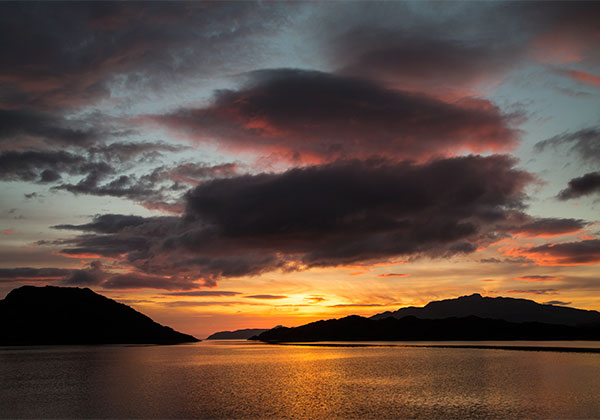 |
|||||||||||||||
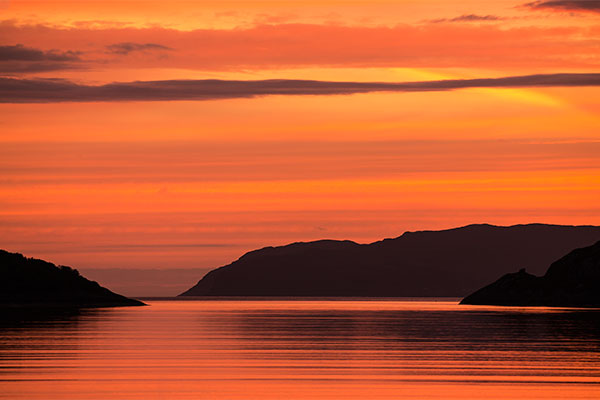 |
|||||||||||||||
|
This was the start of a great week visiting several islands and some remote coastline which would be very hard to visit without the use of a boat. Our first full day was damp, but we need not have worried, within an hour we had finished a lovely breakfast, the weather had dried out and we motored past Ardurmurchan point which is the most westerly point on the British mainland and north into Loch Nevis for a visit to Inverie and the Knoydart peninsular. The first exploration stop was the same as those for the rest of the trip, it was relaxed and allowed plenty of time for a short walk into Knoydart followed by a pint at "The Old Forge" which is said to be the most remote pub in mainland Britain. Knoydart is a place that has been on my list of places to visit for many years and it did not disappoint. Indeed I need to visit Knoydart again as there are several Munros in the area which I need to climb as I intend to complete the task of climbing all 282 of Scottish 3000 foot mountains. The following morning we left Loch Nevis which was to be our stop on mainland Britain as the rest of the trip was spent island hoping to many famous islands which ranged from a couple of hours ashore on tiny islands such as Soay through to a full day to walk round the coast of Canna. We also visited Skye, Mull, and Rum, the later of which was also a new island that I had also sailed past before and had previously wanted to visit. Below is a shot looking towards the Knoydart mountains again taken from the boat but this time in the early morning light. |
|||||||||||||||
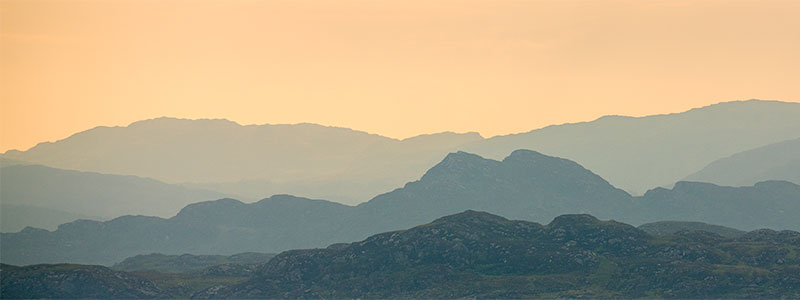 |
|||||||||||||||
 |
|||||||||||||||
|
Above is another sunset, again taken from the boat whilst anchored for the night in Canna harbor. The church is St. Edwards chapel which is on the tiny island of Sanday which is linked by bridge to the larger island of Canna. We got a varied time at each destination which ranged from two hours for a short walk or photpgraphy stop through to a full day ashore with a packed lunch which allowed good time for full island exploration before either an afternoon tea or a beer before reboarding the boat. Once back on the boat, it was time to be served more coffee and tea (or another beer) along with home made cakes and buiscuits as part of this diet busting voyage. |
|||||||||||||||
|
One island that I had sailed past on my previous sailing trips many years ago was the tiny island of Soay. At the time we did not have time to land as we had spent quite a bit of time on Skye its much larger neighbour. During this years voyage we managed an afternoon visit to Soay where we landed at the small pier beside the ruined shark fishing station. Below the building is an image of the summit of Beinn Breach which at just 463 feet is the highest point on the tiny island of Soay, it was however only a short walk over moderately boggy ground to reach the summit and get great views in all directions including the much bigger island of Skye which can be seen in the background. |
|||||||||||||||
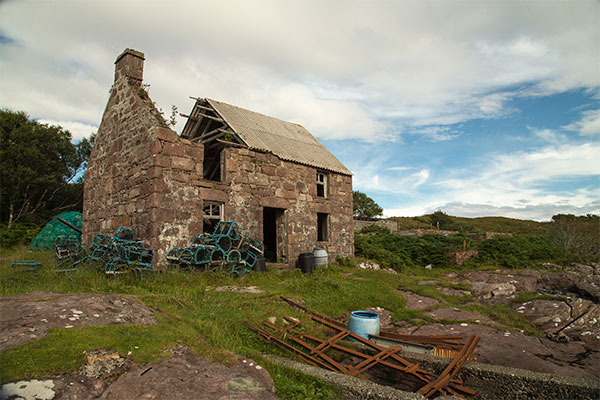 |
|||||||||||||||
---1909.jpg) |
|||||||||||||||
|
At least once every day we went ashore and two other islands that I have not been to before were visited, these were Rum and Canna. During these walks, and from the boat, we saw some great wildlife including many Golden and White Tailed Eagles, good numbers of other birds including lots of sea birds. We were never far from diving gannets, and lots of Petrels were seen flying low over the waves. Marine mammals are always a very popular sighting and most days we managed to see at least one pod of Dolphins, occasionally we also saw Porpoise. Everyone wanted to see whales, and we were lucky to see several Minke Whales on different days including two or three on one day as we traveled between the islands of Canna and Rum. One of these Minke Whales is shown below. |
|||||||||||||||
 |
|||||||||||||||
|
As with many holidays, the trip seemed to go very fast, the food was fantastic, the captain dived for Scallops in the afternoon which were then served as part of the evening meal, I very much doubt that anyone can ever eat fresher Scallops. |
|||||||||||||||
 |
|||||||||||||||
|
There are many great places in the world to explore, many of these warrant taking the camera along for both the wildlife and the scenery. But wherever you go in the world, its always worth going to places in your own country. There are many great locations in England, Scotland, and Wales, but one of the most stunning locations in Britain is always the Scottish West coast. It is fair to say that there is no way I want to leave it another 20 yeas before I have another boat trip around the Western Isles, indeed we are already planning a longer trip to visit different islands as our 2016 holiday. |
|||||||||||||||
|
|
|||||||||||||||
| 14th August 2015 | |||||||||||||||
| Photographing Brock | |||||||||||||||
|
As everyone knows, I am quite happy to photography most species of birds, mammals, macro, in fact I am happy to point my lens at almost any wildlife be it common, rare, or otherwise. This is in my opinion definitely the best approach as its far better to photograph something that is "working" rather than chase images that are simply not available. I obviously have targets and its always good to have lots of new ideas and then gradually tick off some target species given the right opportunities and conditions. A few weeks ago, I was working on some target species, some were working well and I was pleased with the results. But my luck got even better, when I was given the chance to photograph the European Badger. These lovely animals are always high on everyones photographic list even though I have photographed a few years ago. I had no hesitation in saying yes, as badgers are always on my target list, indeed I have wanted to photograph this species again for a while. I spent three evening photographing badgers and rattled off several thousand images including these two below. |
|||||||||||||||
 |
|||||||||||||||
 |
|||||||||||||||
|
As a wildlife photographer 99.99% of my images are straight images and like most wildlife photographers I only do minimal processing in Photoshop. Every now and then I like to try something a bit different and have a play with a few filters and plugins indeed this is an area which I find interesting (although its very easy to spend hours on one image rather the usual 3 or 4 minutes processing time). The image below is made from a single image of two badgers but also has had a few effects, plugins, and filters used to create something a bit different before a final black and white treatment. |
|||||||||||||||
 |
|||||||||||||||
|
|
|||||||||||||||
| More of my Badger Images can be seen on the Badger page in my gallery | |||||||||||||||
|
|
|||||||||||||||
| 25th July 2015 | |||||||||||||||
| Three British Loons | |||||||||||||||
|
Over the past few days, I have been continuing to update some galley pages with images from the past. A few of these images have been sitting on my hard drives for several years without ever having been processed, whilst others have been reprocessed specifically to update my web pages and to refresh a few of my illustrated wildlife talks for camera clubs and wildlife groups. Three species that I have been meaning to update for a while are amongst the most graceful of all of the bird species, the Divers, or the Loons as they are called in North America. Worldwide, there are five species of Loons / Divers, and I have been fortunate enough to see three of these species on several occasions. They are undoubtedly a great species that are always enjoyable to watch as they swim so silently but powerfully across the water. They are silent for large periods of time, and swim very well under water. Then all of a sudden they can pop up a few feet away from you without making a sound. This makes them easy to miss if your not paying full attention. But their call is very eerie and distinctive, its a very haunting sound on a misty morning as it passes across a lake. All Divers / Loons are photogenic in their summer breeding plumage and look great in images, but the beauty of the loons can only be really appreciated when seen at close quarters.
Great Northern Diver
Red Throated Diver
Black Throated Diver
|
|||||||||||||||
 |
|||||||||||||||
|
Above is the Great Northern Diver in winter plumage, below is the Red Throated Diver, and bottom is the Black Throated Diver. I have yet to see the other two species (Yellow Billed, and Pacific) |
|||||||||||||||
 |
|||||||||||||||
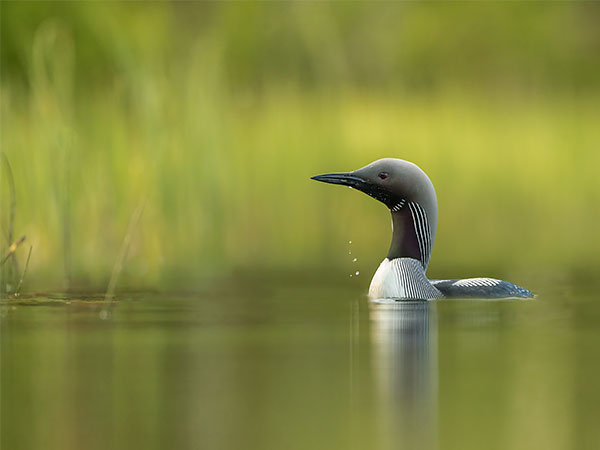 |
|||||||||||||||
|
|
|||||||||||||||
| 16th July | |||||||||||||||
| Website Gallery Update | |||||||||||||||
| During the past few weeks, I have added over 200 images into over 25 pages in the gallery section of my website. This includes updates to various existing pages as well as adding some new pages for some new species. | |||||||||||||||
 |
|||||||||||||||
 |
|||||||||||||||
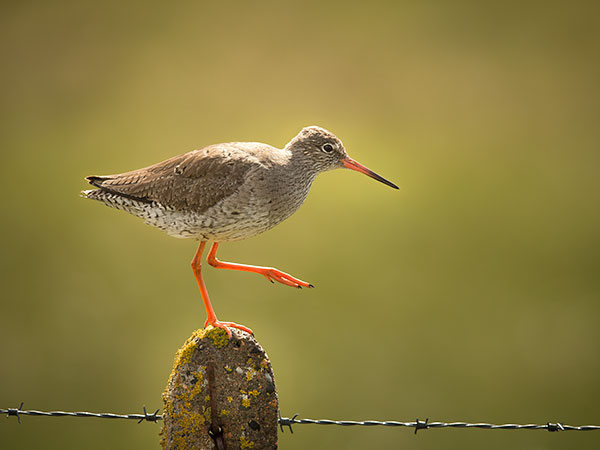 |
|||||||||||||||
 |
|||||||||||||||
|
Of the include images and new pages added, they are from my trip to Scotland a few weeks ago through to some updated pages from my visit to Finland last summer such as: Osprey and Black Throated Diver.
From my recent trip to Scotland, I was fortunate to get many new wader images, amoungst those are: Oystercatcher, Redshank, Lapwing, Snipe, and Golden Plover. |
|||||||||||||||
 |
|||||||||||||||
 |
|||||||||||||||
---59O4381.jpg) |
|||||||||||||||
|
Other updates include some woodland species:
As well as waders, there are other pages added to the Moorland section including some images from Uist in both The Weatear and The Red Deer pages. Many other pages have had the odd one or two images added, including Barn Owl, Little Owl, Golden Eagle, along with both Green & Great Spotted Woodpecker. |
|||||||||||||||
 |
|||||||||||||||
 |
|||||||||||||||
|
In total, I have added around 100 new images which have been taken during the past three months, along with at least another 100+ images that were taken longer ago. These are in adition to the three pages I added a few weeks ago which were Corncrake, Common Cuckoo, and Pasque Flower,
I have several more images and new pages to add which will hopefully be achieved over the next week or so, these will include: Curlew, Redstart, Red Throated and Great Northern Diver, and a few others. |
|||||||||||||||
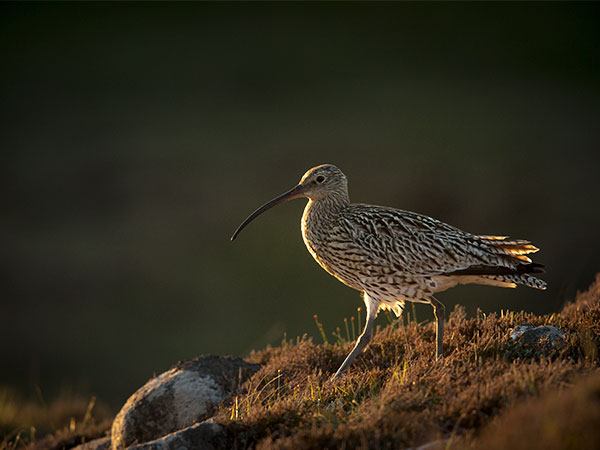 |
|||||||||||||||
 |
|||||||||||||||
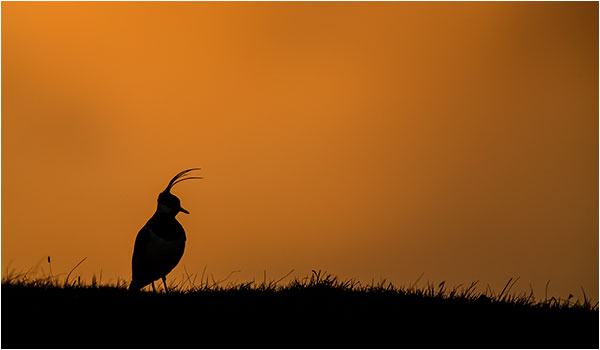 |
|||||||||||||||
|
|
|||||||||||||||
| 25th June | |||||||||||||||
| The Sound That Summer Has Arrived - The Sound Of A Cuckoo | |||||||||||||||
|
Everyone has heard the familiar sound of a Common Cuckoo calling, it's probably the easiest to recognize of all of our British birds. It is one of the signs that summer has arrived each year. But Cuckoo are not quite as easy to spot, but with a bit of patience, then can reasonably easily be seen as well as heard. But photographing them is much harder. Well it was until Alan McFayden of Scottish Photography Hides managed to put everything in place to enable photographers to take pictures of this species. Since then a large number of photographers have been lucky enough to get some great images of this tricky to photograph species. As Cuckoo has been in my top ten list of British species to photograph for a long time, I obviously felt the need to pay Alan a visit. As you will see from the images below I am very pleased that I did. |
|||||||||||||||
 |
|||||||||||||||
 |
|||||||||||||||
 |
|||||||||||||||
 |
|||||||||||||||
|
The Common Cuckoo is a summer migrant into Britain which usually arrives in mid April and then leaves again in June or July, so the photography window is quite small. they are found across a wide range of habitat from farmland to moorland. The British breeding population is thought to be 150,000 pairs which only a small number of the global population which is well over 6 million pairs with a very wide range which stretches as far east as Japan. Indeed about 33% of the global Cuckcoo population migrates to Europe, the rest migrate further east. In Britain (and several other countries) they are in decline due to habitat loss and disturbance, indeed they are a red listed bird in Britain due to the decline in numbers. The winter range is from central Africa below the Sahara down to the Southern area of South Africa. The Cuckoo is probably the most well known bird for laying its eggs into another birds nest so that the other bird can feed and look after the young Cuckoo. This is called "Brood Parasite" of which there are about 50 known species to do this. The female Cuckoo visits several nests in the area laying a single egg in each, they usually lay eggs in about 8 - 10 other nests, but this can sometimes be much more. Favored species of nests for this brood parasite include Meadow Pipit, Dunock, and Reed Warbler. |
|||||||||||||||
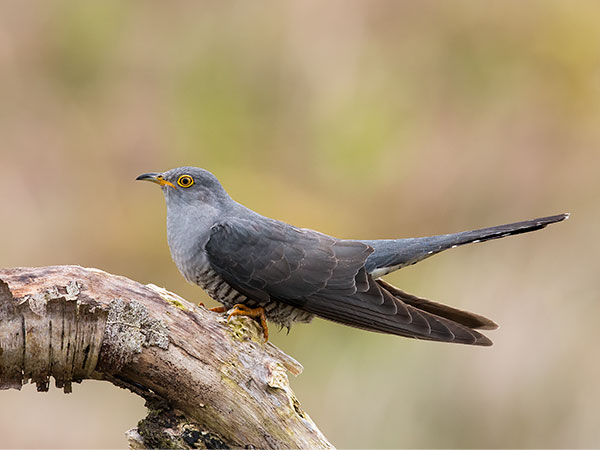 |
|||||||||||||||
 |
|||||||||||||||
|
|
|||||||||||||||
| 15th June | |||||||||||||||
| Corncrake | |||||||||||||||
|
As readers of my blog will know, I am happy to photograph any species, including those that I have photographed many times before, indeed it's not uncommon for me to visit the same species several times looking for better images along with something a bit different to what I already have. But it is also good to photograph new species. For many years, the Corncrake has been the bird that I have most wanted to see in Britain. They have a limited range that includes a few sites in Cambridgeshire fairly close to my home, but by far the best chance to see them is a visit to some of the islands of North West Scotland such as Uist, Iona, or Mull. Even when you are at a known Corncrake site, they can be a notoriously hard bird to see, and even harder to photograph, so a targeted visit is the best way to increase the chances. For a number of months, I have been planning a visit to Uist in the Outer Hebrides with my photographic friend Ian Haskell with a number of different photographic targets of differing species. But Corncrake was high on my list of species to photograph during this visit to Scotland. |
|||||||||||||||
 |
|||||||||||||||
 |
|||||||||||||||
| We were lucky, during our time on Uist, we managed to see them on about 4 or 5 occasions during our stay including at dusk on our very first evening on the island. At one point we could see three birds at once, so great views for such a shy species. | |||||||||||||||
 |
|||||||||||||||
|
A few hundred years ago, Corncrake were a reasonably common bird, but like numerous species they have been in decline and by the mid 1990's it is thought that there were lass than 500 pairs left in Britain. But conservation efforts have seen the Scottish population rise and now 20 years later it is almost 1300 males in Scotland according to surveys of the bird. The biggest population is on the island of Tiree which has about 500 males (equal to the whole British population in 1995). Corncrake are a protected bird that are prone to disturbance, and the best way to spot them is to remain perfectly still when you hear them calling, and then hope that they show themselves in the open for long enough to get a few images. |
|||||||||||||||
 |
|||||||||||||||
|
Even though I have probably seen between 300 and 400 species of British birds, there are still plenty of British species that I have yet to see. Currently, I am very pleased to have seen and photographed Corncrake |
|||||||||||||||
|
|
|||||||||||||||
| 19th May | |||||||||||||||
| It Would Be Good To Photograph Brown Bears In The Snow | |||||||||||||||
|
Over the past few years, I have visited Finland twice to photograph the European Brown bears, these were in June 2010 and June 2014. I have visited during February and march during several other years were the photograph targets have been mainly birds. During all but one of these visits i was with my friend Danny Green, and we would often chat about various subjects and locations that might be a good location for a future visit. Like many wildlife photographers we enjoy the winter weather including both the challenge and the results that can be achieved in winter conditions. On many occassions we had both said how "it would be good to photograph European Brown Bears in the snow" when they emerge from hibernation. Therefore a few months ago, Danny and myself booked our flights to Finland so that we could spend the first 12 days of April trying to get some images of the bears in the snow. It felt like an excellent opportunity that would fit well with my growing collection of images from the Boreal forest and the surrounding sub Arctic wilderness region. |
|||||||||||||||
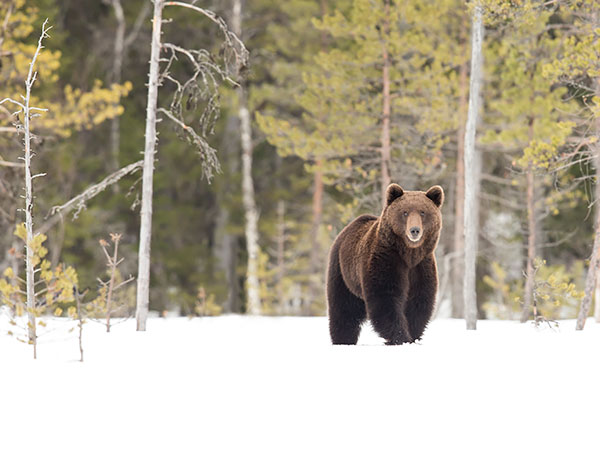 |
|||||||||||||||
|
The date that bears leave their hibernation can vary a lot each year and is far from an exact science, as a result one of the biggest challenges is knowing when to visit. The best dates can vary from the end of March through to the end of April and is very dependant on a number of factors including weather, tempreture, the ammount of snow in the area, and conditions in the bears den. We particularly wanted to photograph the bears in their long winter coats whilst walking in a lovely white snowy setting. If you visit to early the bears are still in hibernation - visit to late and the snow has gone and everywhere is covered in mud and the setting is not at all photgenic. In an ideal world, it would be good to spend a month or more in the area photographing a number of species and then try and time the visit to the bears to the best few days. But with annual leave, booking of flights, the cost of nights in the bear hide, etc. this is obviously not an easy or practical option. |
|||||||||||||||
| We decided on a 12 day visit and booked our flights, the visit was planned to include a few other locations and species as well as bears. (a few of the other species we photographed including three species from the grouse family in one day are covered in my previous blog post.) | |||||||||||||||
|
I arrived in Finland on 31st March, we collected a hire car from the airport and drove North East towards the Finnish and Russian border where the hides are situated in the remote targa forest. It was snowing hard as April approached, this year winter was only slowly giving way to spring, as we wondered if we had planned our visit to early. But by the time we arrived at the accomadation and had settled in we were eager to get to the hides and hopefully start seeing and getting images of bears. Normally the route from the accomadation to the hides is a short drive followed by a walk for a few hundred meters. But all but the main roads were still full of sdnow and there was no way that anyone could drive along them. The walking was also not practical because the snow was still over a metre in depth and you sink as soon as you step of any of the paths. As a result the only way to get to the hides was a 30 minute snowmobile ride which took us right up to the hide door, which was obviously very welcome and involved virtually no physical effort. |
|||||||||||||||
 |
|||||||||||||||
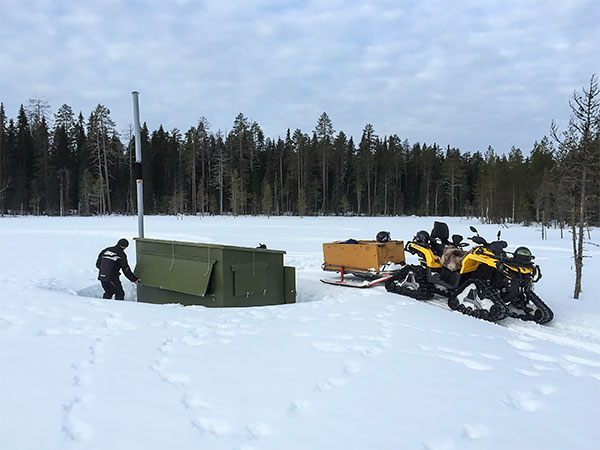 |
|||||||||||||||
|
|
|||||||||||||||
| On the way, we passed a few bear footprints in the snow which obviously helped lift our expectations. The snow was deep, and did not yet have many pine neddles from the forest or mud from the bears walking, the conditions were very good for photography. All we needed was some bears ...... | |||||||||||||||
|
|||||||||||||||
|
The hides are very comfortable and we saw a variety of great wildlife including Ravens and White Tailed Eagles many of which came within a reasonable photographic range and a few images were achievied. But the daylight gradually disappeared as the sun dipped over the horizon and it became to dark for photography and so far we had not seen any bears. We got back onto the snowmobiles and returned to the accomadation where we heard that there had been a few bears in the area. The centre has some remote camera traps that they were using to track the bears movements in the area and there was plently of evedence that a few bears had left hibernation and were wandering around the forest looking for food. |
|||||||||||||||
 |
|||||||||||||||
|
The same routine went on for several days, the bears were visiting after dark and we began to think that we were going to miss the chance to get any images. But on our penultimate evening in the bear hide we were quietly chatting when we saw a male bear which was about 2 to three years old. He was walking a few hundred metres away, we imediately stopped talking and took up position behind our lenses hoping the bear would walk towards us and pass within photographic range. Luckily for use it did and we managed to get a few images before it ran off. 30 minutes later the bear returned and passed through again and we managed a few more images. |
|||||||||||||||
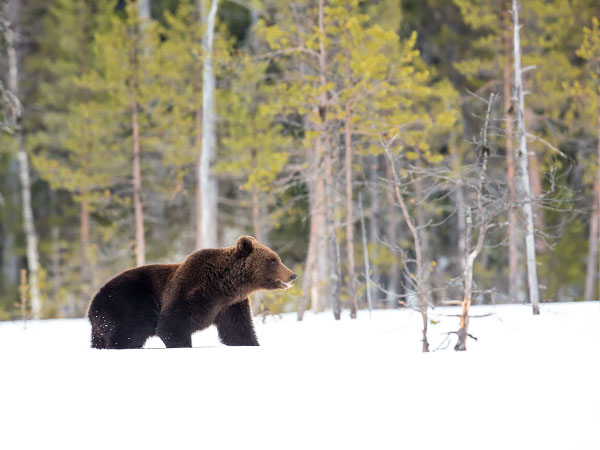 |
|||||||||||||||
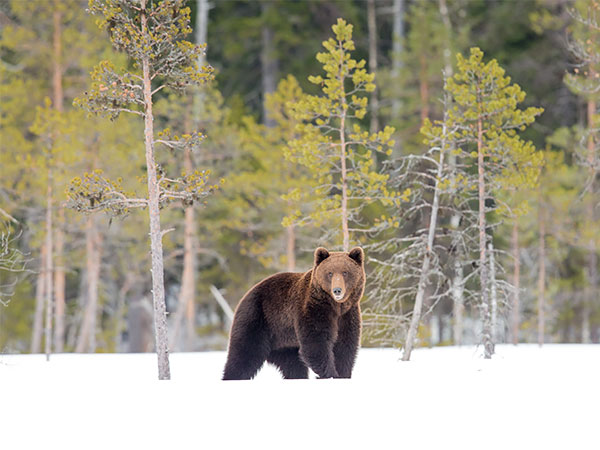 |
|||||||||||||||
 |
|||||||||||||||
 |
|||||||||||||||
 |
|||||||||||||||
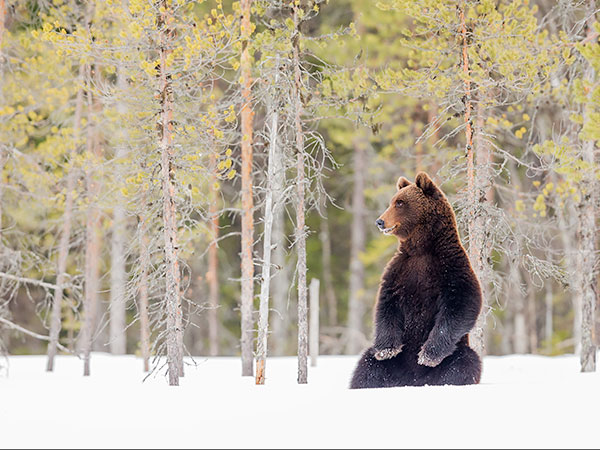 |
|||||||||||||||
|
|
|||||||||||||||
| 20th April | |||||||||||||||
| Three Species Of Grouse In One Day | |||||||||||||||
|
Over the years I have been lucky with many of the species that I have had the opportunity to photograph, this has lead to an approach to my wildlife photography that varies considerably, but is basically the same - sounds contradictory. Well let me explain. Like most photographers, I keep a target list of species that I would like to photograph and obviously some species are higher on that list than others. The list is not necessarily a list of targets for a set time period, just a way of building up images of species, habitats, and things that I am interested in. Some species never really leave a target list, as you build up a collection of species that you alike. These include things such as Swallowtail butterflies, Barn Owls, Lady Slipper orchids, etc. and I am gradually adding some of these blue chip species into a good collection of images. Whilst out and about looking for (and hopefully photographing) my target species, my second approach is to take the opportunity to photograph anything that presents itself. To get the best from a visit you need to be flexible and spend time with whatever wildlife we can find. Often this second approach means a target species has to be ignored because it isn't working as expected, or a new target or opportunity arises. This may be a rarer species, or a subject in good light, or just something else which takes my fancy. |
|||||||||||||||
 |
|||||||||||||||
|
During the first 12 days of April, I had arranged to visit Eastern Finland with my friend Danny Green targeting a number of species. Winter has been slow to give up its grip this year, and spring was only just beginning to show. As a result, there was still around a metre of snow covering the eastern area of Finland which made things very good for photography. It even snowed a few times during our visit to keep the backgrounds nice and white for our phototos. During the first week, we photographed a number of species both from our target list and several other birds and mammals as the opportunity arose and we were slowly but surely amassing a good collection of images. We had both previously seen and photographed Raven, White Tailed Eagle, Siberian Jay, Bullfinch, Great Spotted Woodpecker, Redpoll, European Brown Bear, but it was still good fun to photograph all of these again, especially as they all looked very photogenic in the snow. One of the early highlights was several Red Squirrels in their long winter coats which often posed nicely for the camera. |
|||||||||||||||
 |
|||||||||||||||
 |
|||||||||||||||
 |
|||||||||||||||
 |
|||||||||||||||
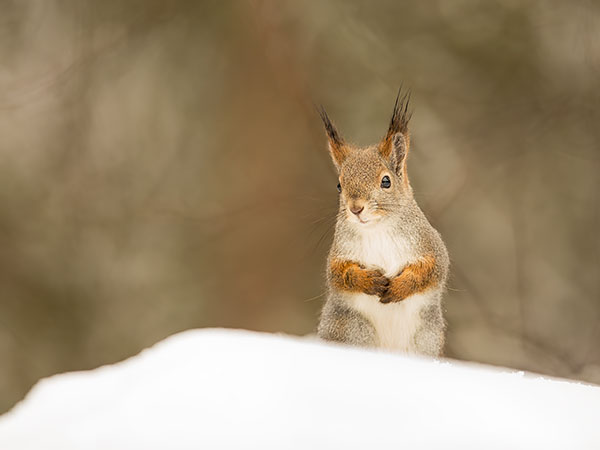 |
|||||||||||||||
|
On Thursday 9th April we were given the rare opportunity to photograph three different species from the Grouse family during the day. Danny had been in Finland the previous week and had been doing some photography with a group from his photography company "Natures Images" along with a guide from Finnature. In his travels, Danny had met the famous Finnish photographer Markus Varesvuo who was busy photographing the various grouse species in Finland for a book he is writing. Luckily for us, we were given the opportunity to spend a day targeting three species from this family. Most British photographers would be very happy to photograph one of these species, but the chance of three was both unusual and certainly a great challenge that we decided well worth the early start and effort involved. |
|||||||||||||||
| One : Black Grouse | |||||||||||||||
 |
|||||||||||||||
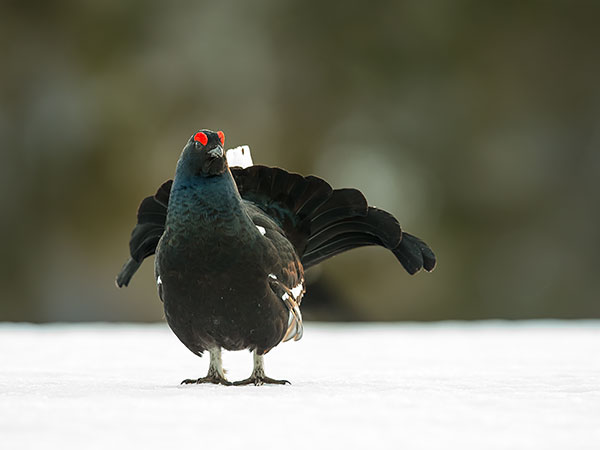 |
|||||||||||||||
 |
|||||||||||||||
 |
|||||||||||||||
---59O2040.jpg) |
|||||||||||||||
 |
|||||||||||||||
 |
|||||||||||||||
|
The first species was Black Grouse which involved getting up at 4:00 ready to leave the hotel at 4:30 in order to drive to the hides overlooking the Lek. But it was worth the early start as we saw around a dozen males lekking along with around 4 females. We did not have to wait long for the Black Grouse to arrive, they then walk around the Lek and fight for dominance. This can last for about an hour sometimes a bit longer, and during this time I was in a hide with Marcus who I had only met the previous day. It's great fun, but hard work trying to concentrate on certain birds trying to anticipate which one will start to fight next, all of the while keeping an eye on the light as well as quite tricky exposure and focus settings. Markus is a Canon explorer and I found him very interesting, we had a good chat and two hours quickly passed, he was telling me about the various bird species in Finland, his next book project and all sorts of things. The time between the grouse fighting was interesting as I learnt more about Finnish wildlife and Markus's photography and his plans to build his image collection ready for his book. Well, no surprises that I know the title of the next book that I will be adding to this years Christmas list. |
|||||||||||||||
 |
|||||||||||||||
 |
|||||||||||||||
| Sometimes a slow shutter speed can create some interesting artistic effects, especially when there is no other options due to early morning light levels being not enough for higher speeds. | |||||||||||||||
| Two : Hazel Hen | |||||||||||||||
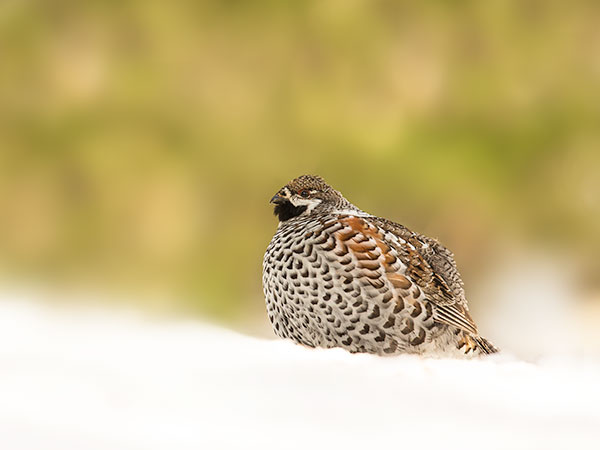 |
|||||||||||||||
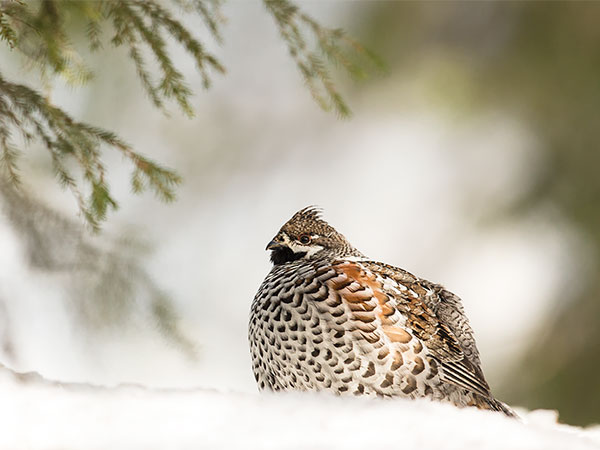 |
|||||||||||||||
|
Our second target species was much rarer and a very secretive bird. The Hazel Hen is not often seen yet alone photographed and we were very lucky to have the opportunity to photograph a male bird in lovely snowy conditions. It is fair to say that Danny and I struggled a bit with our camera gear, the deep snow in the forest and with our snow shoes that we had borrowed for the occasion. But Markus and Jarmo Manninen (our guide from Finnature) were brilliant at locating the bird. After around an hour we were all pointing our lens at this tiny bird as it ran across the forest floor. |
|||||||||||||||
| Three : Capercaillie | |||||||||||||||
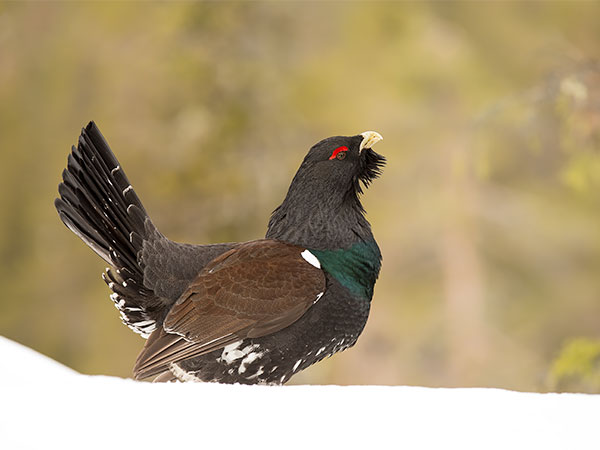 |
|||||||||||||||
 |
|||||||||||||||
 |
|||||||||||||||
 |
|||||||||||||||
|
The final species was the largest of the European Grouse family, and a true forest specialty, the Capercaillie. The bird involved a walk of about three km. but it seemed like much more. But it was worth it to see one of my favorite bird species in such great snowy winter conditions. After several hundred more images It was a long but satisfying walk back to the car, which was about 30 minutes drive back to the hotel in Kusummo. During the drive, we saw a Great Grey Owl flying along the field in search of his meal, but it was too far away for any images. |
|||||||||||||||
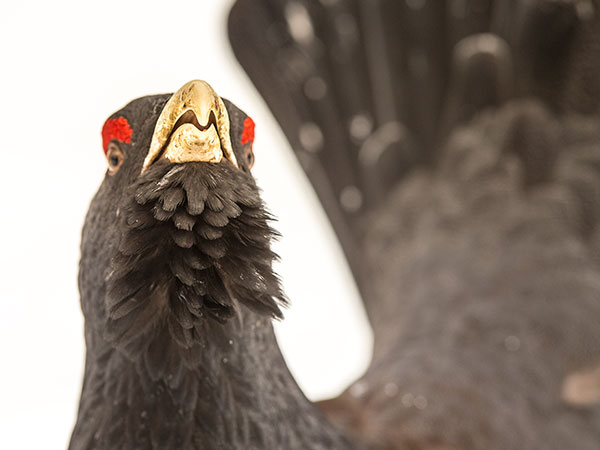 |
|||||||||||||||
|
During the 12 days we ended up shooting several thousand images which has now been gradually whittled down to under a hundred images, these will feature on more posts, several other pages, and Facebook. A few may be used for photographic competitions, and I might end up with a Red Squirrel greetings card. I certainly will update my winter wildlife talk over the coming months. And, a big thanks to Danny for a great trip, we are already planning the next one. |
|||||||||||||||
|
|
|||||||||||||||
| 2nd March | |||||||||||||||
| Royal Photographic Society Journal | |||||||||||||||
|
I am proud to announce that four of my images along with the hanging plan from my ARPS panel have been published in the March edition of the RPS journal. |
|||||||||||||||
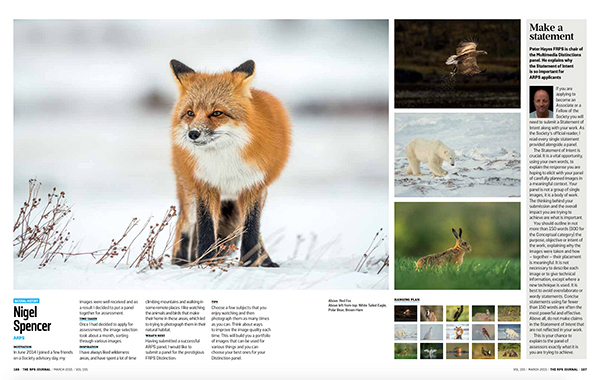 |
|||||||||||||||
|
|
|||||||||||||||
|
For those of you who are members of the RPS, the article is in volume 155 of the RPS journal and can be found on pages 186 and 187. As well as the article in this months RPS journal, my panel is also featured in the distinctions section of the RPS website along with a few images. I must admit I am really pleased with all the positive comments and publicity that gaining my ARPS has created and I am also very happy that the RPS has chosen to add my work to their distinction showcase galleries and articles. |
|||||||||||||||
|
|||||||||||||||
|
|
|||||||||||||||
| 21st Feb | |||||||||||||||
| More Good News - This Time From Belgium, Yorkshire, & Bristol | |||||||||||||||
|
Following on from a few recent successes in external exhibitions, I have been spurred on and have entered a few more FIAP competitions. My first medal from overseas was awarded from a exhibition in Belgium that awarded me a FIAP Silver Medal to my running Arctic Fox image. The same image won another FIAP silver medal at the Yorkshire Salon a few weeks later which was a lovely end to 2014. I entered the 2015 Bristol Salon of photography and was really pleased to win two further medals. |
|||||||||||||||
 |
|||||||||||||||
|
My arty image of a pair of Burnt Tip Orchids which was taken last year in Somerset, was awarded a score of 15 out of 15 and a FIAP Silver medal. This was particually pleasing as it is first ever medal in an "Open" section. The Black Throated Diver image below, was also awarded 15 out of 15. It was awarded a FIAP Gold Medal and won the best image in the nature section. |
|||||||||||||||
 |
|||||||||||||||
|
|
|||||||||||||||
| 13th February | |||||||||||||||
| Common Cranes And Many Other Great Species In Israel | |||||||||||||||
|
During the last week of January, I spent an enjoyable week in the Agamon Hula area of Northern Israel which is close to the Israel and Syria border. It was on an organised trip by the leading British Wildlife Photography company Natures Images. Our main target were the 40,000+ Common Cranes that winter each year there as a stop over on their migration journey. During this visit, I took over 5000 images, and a very small selection is shown below. Many more images along with more details of the Common Cranes can be found in the gallery section on my Common Crane page. |
|||||||||||||||
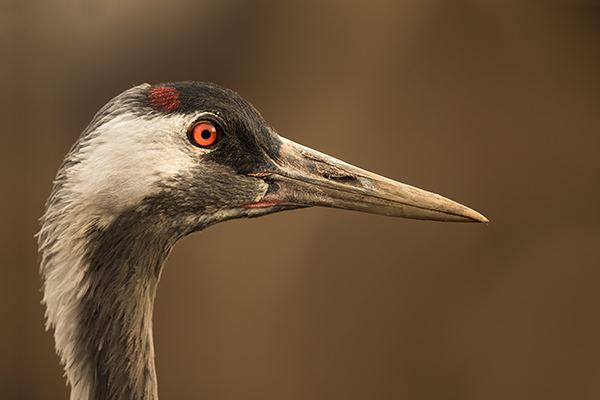 |
|||||||||||||||
 |
|||||||||||||||
---59O1704.jpg) |
|||||||||||||||
| Many other species were seen and photographed including Griffon Vultures, Coypu, Black Winged Stilts, Marsh Harrier, and Glossy Ibis. | |||||||||||||||
 |
|||||||||||||||
|
|
|||||||||||||||
| 4th February | |||||||||||||||
| The British Bird Watching Club - Annual Photographic Competition | |||||||||||||||
|
In February last year, Sue and I stayed in the Grant Arms in Grantown on Spey during a great week of walking, and photography. We targeted a few species and had some great success with Ptarmigan and Mountain Grouse. As mentioned in a previous blog, Sue and I both enjoyed the hotel, it was very friendly, great food, and we had no hesitation on recommending the hotel. The hotel runs a wildlife club "The British Bird Watching Club" which runs talks and other activities including an annual photography competition open to hotel guests to enter images that they have taken during their stay. When we returned, I emailed a few of my images to the BBWC as an entry into the 2014 competition. Earlier this week, I received an email from them to say that I had won the best wildlife category and the best Bird category. Without a doubt, it is always very pleasing to have any competition success. The BBWC newsletter shows that they received 239 entries in the bird category. Sue and I was also very pleased that the prize is a voucher for accommodation in the hotel. We had already decided we wanted to go back to Speyside and the hotel was on our list of places to revisit when time allowed. But with the hotel voucher, we are now making plans for a return visit later this year. |
|||||||||||||||
 |
|||||||||||||||
|
Above the Mountain Hare image taken in Feb. 2014 that won the BBWC "Best Wildlife Image 2014" Below the Ptarmigan image taken a few days earlier that won the BBWC "Best Bird Image 2014" |
|||||||||||||||
 |
|||||||||||||||
|
|
|||||||||||||||
| 14th January | |||||||||||||||
| How Many Visitors Visit A Website? | |||||||||||||||
|
Well I guess that is a question that is asked by anyone who has their own website or blog. This can be tracked in a number of ways from a hit counter through to analytical software that looks at many statistics of web pages and the visits to them. As a result of the above curiosity, I decided to add some basic (and free) stats gathering info from Google onto my site. This is only for a bit of fun and to see how many people actually visit my site. This package has been on the site for over a year and below is the basic info for 2014. |
|||||||||||||||
|
|||||||||||||||
|
I don't really know what figures that I had expected from the analysis stats, but having had a look at them, I find it interesting to look at the results. I am happy with the figures as it shows that the work involved with building and maintaining the site is worthwhile. But incase anyone is wondering, I don't do any further analysis of the results. As stated above, this was just a bit of fun and to satisfy the curiosity of what sort of volume of people visit my site. It is not big brother, and I would not want to put off anyone visiting. If you are one of the people who made up the stats above and visited in 2014, then Thank You. I hope you enjoyed the website and will continue to revisit the site. I will be continuing to make an effort to keep it updated in the months to come. |
|||||||||||||||
 |
|||||||||||||||
|
Above is the last image that I took in 2014 which was a view out of one of my windows looking across the fields behind me which was taken early on New Years eve just as the sun was rising. Below is one of my first images of 2015 which is of a Great Spotted Woodpecker which was taken a few days ago. |
|||||||||||||||
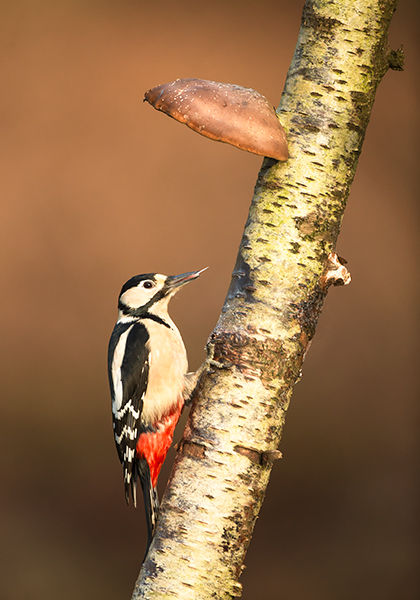 |
|||||||||||||||
|
|
|||||||||||||||
|
|
|||||||||||||||
|
|
| To view my older blog posts - please use the links on the left below "Blog" in the menu. |
|
|
| Blog History |
|
I used to keep an active blog on my old Website and one of the things I am very keen to do is to get back in that habit and update this blog at least once a month and often more. Please revisit and keep an eye on what I have been up to along with my thoughts. |




